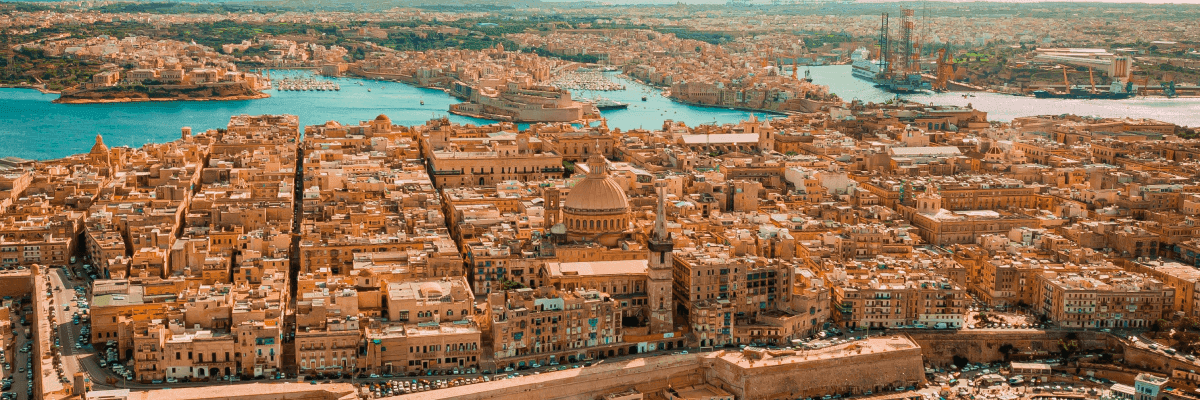Curious what is the currency in Malta? In this article, we’ll delve into the unique financial landscape of this Mediterranean gem, exploring the currency, and practical insights for navigating monetary transactions on the islands.
Maltese currency
In 1825, an imperial order brought sterling coins to Malta, replacing various circulating coinages, including those issued by the Knights of St John.
The terms lira in Maltese and pound in English were on banknotes until 1986 when lira became the official name in both languages. Mil-denominated coins were phased out in 1994.
Finally, in July 2007, the European Union approved Malta’s application to join the euro area. Subsequently, in January 2008, the euro became the official currency in Malta, replacing the Maltese lira at an exchange rate of €1 = MTL 0.429300.
What currency is Malta using now?
Presently, the euro stands as the legal tender of Malta. The Maltese government acknowledges it for all financial transactions, encompassing the purchase of goods, tax payments, and debt settlements.
No other currency holds official acceptance in Malta.
Key facts about the official currency of Malta:
| Official Maltese currency | Euro |
|---|---|
| Symbol | € |
| Currency code | EUR |
| Banknote denominations | 5€, 10€, 20€, 50€, 100€, 200€, and 500€ |
| Minor unit | Cents |
A fun fact is that Euro coins come in different designs in every Eurozone country.
In the case of Maltese euro coins, the €1 and €2 feature the emblem of the Sovereign Order of Malta, known as the Maltese Cross. It became associated with the island during the Order’s rule from 1530 to 1798.
The 10, 20, and 50-cent showcase the Emblem of Malta, displaying a heraldic representation of the national flag, a mural crown symbolising the fortifications of Malta, and flanked by olive and palm branches representing peace.
The shield has a wreath with a ribbon that carries the inscription Repubblika ta’ Malta (Republic of Malta).
Finally, the 1, 2, and 5-cent depict the altar at the prehistoric temple complex of Mnajdra, built around 3600 BC by the sea.
Spending money in Malta
Here is an overview of the most commonly used payment methods.
Credit cards
In Malta, credit cards, particularly VISA and Mastercard, find widespread acceptance, especially in touristy establishments.
However, some retailers refuse American Express (Amex) due to the high fees it imposes. Discover cards also face lower acceptance.
It’s crucial to be aware of potential overseas fees associated with credit card use, such as cash advance fees, international transaction fees, charges for overseas withdrawals and other hidden fees.
Credit cards enjoy broad usage in Malta, and merchants typically accept payments on all major networks.
Debit cards
Debit cards, commonly used in Malta, let you buy at point-of-sale terminals and withdraw cash directly from your bank account.
However, exercise caution, as your home bank may impose high rates and fees when you use your card overseas. These fees may encompass ATM withdrawals, overseas transactions, and foreign currency conversions
Prepaid cards
Opt for a prepaid travel card when making payments in Malta. They usually incur lower fees on euro currency exchange than credit or debit cards.
Prepaid travel cards function by letting you load funds in your preferred currency and lock in the exchange rate.
Also, many of these cards allow you to hold multi-currency balances. It lets you avoid dynamic currency conversion and other hidden fees while providing the security and convenience of your regular cards.
However, keep an eye on potential charges like reload fees, inactivity fees, and ATM withdrawal fees.
Moreover, it’s worth noting that the currency loading process onto your card may take days, potentially leaving you cash-strapped.
Cash
Having some travel money in euro banknotes is a wise move for various situations. It is advisable to exchange money at the Central Bank or any currency exchange office before or upon arrival.
For the initial days of your trip, bring enough local currency and exchange the remaining amount once you have settled. This approach allows you to take advantage of more favourable local exchange rates.
While cards and other payment methods are widely accepted in popular areas and major cities, it’s prudent to keep some cash on hand for places off the beaten path where card acceptance may be limited.
Currency exchange
The euro, the currency in Malta, is one of many global currencies and is traded against all official currencies worldwide.
The euro’s exchange rate is affected by factors like currency supply and demand and regional and global economic and political events. Nevertheless, right now €1 is priced at £0.87.
Currency exchange before the leave
When you want to make sure you have enough travel money in the local currency before you go on a trip, or you want to spend money in cash, there are three options to buy euros from home:
- Purchase euros online for delivery or pick-up in-store.
- Exchange AUD for EUR at a currency exchange store.
- Acquire euros at the airport.
Foreign currency exchange in Malta
When exchanging Maltese currency for euros in Malta, consider these options:
Exchange Kiosks, Stores, and Desks
Look for the Bureau de Change sign, but be cautious, as kiosks in places like hotels or airports may have higher costs.
However, be cautious of offices claiming no fees or zero commissions, as they may compensate with unfavourable rates. Remember that not all places may exchange AUD, and they may have strict bill conditions.
Airports, Train Stations, and Hotel Desks
These spots may offer convenient currency exchange but watch out for potential markups and fees. Malta International Airport’s exchange bureaux operate 24/7, accepting international cards.
However, avoid exchanging cash at airports and hotels due to poor exchange rates and higher fees.
ATMs
You can always withdraw money at ATMs if you need more Malta currency. Malta has many ATMs, some drive-through ones by the Bank of Valletta.
Be aware of fees from the ATM provider and your home bank for overseas withdrawals. Always choose the Maltese currency at ATMs for better exchange rates.
Prepaid Cards or Travel Debit Cards
These can provide a better exchange rate and lower costs.
📚Read more: The Best Place To Exchange Currency
FAQ
What is the best currency to use in Malta?
The euro is a local currency in Malta. Therefore, it is the best one to use throughout your trip.
Can I use British pounds in Malta?
Typically, British pounds (GBP) aren’t widely accepted in Malta. However, you might come across popular tourist spots that do allow payment in this foreign currency.
Should I buy euros in the UK or Malta?
Determining whether converting pounds to euros is more cost-effective in the UK or Malta poses a challenge. Your exchange costs rely on the provider you choose. They establish the exchange rate and fees, which can vary significantly.
Should I take euros to Malta?
Yes. As the euro is the only legal currency in Malta, you should take it to this country.

